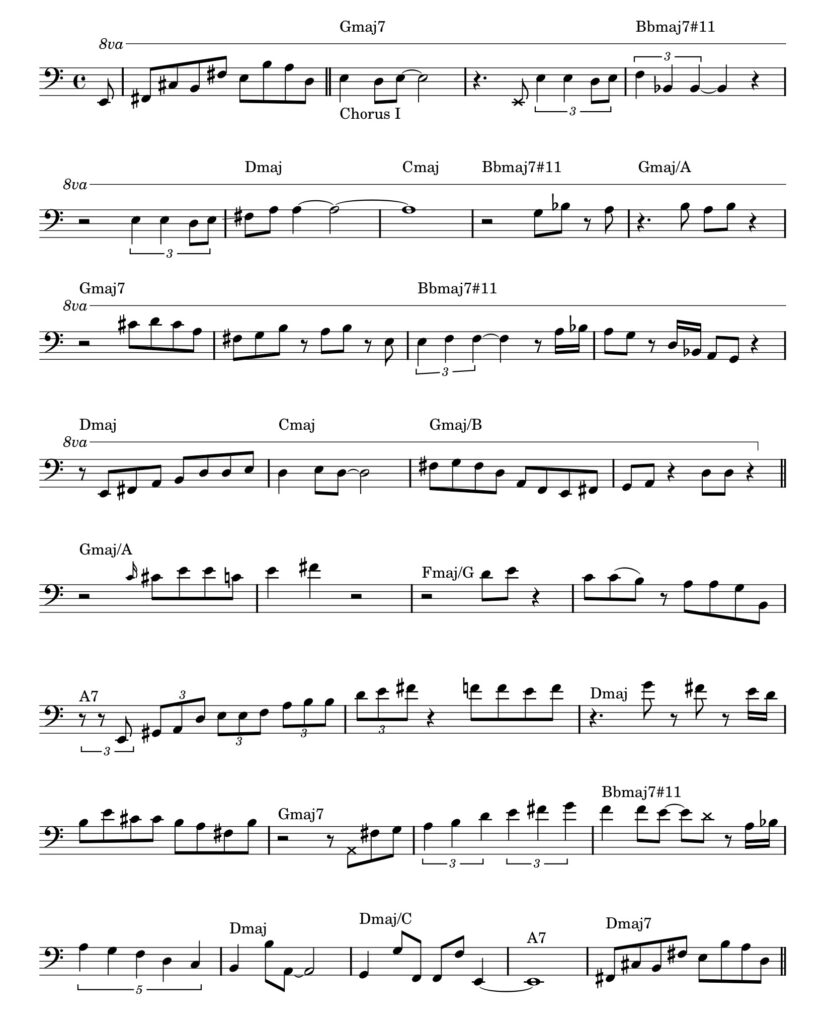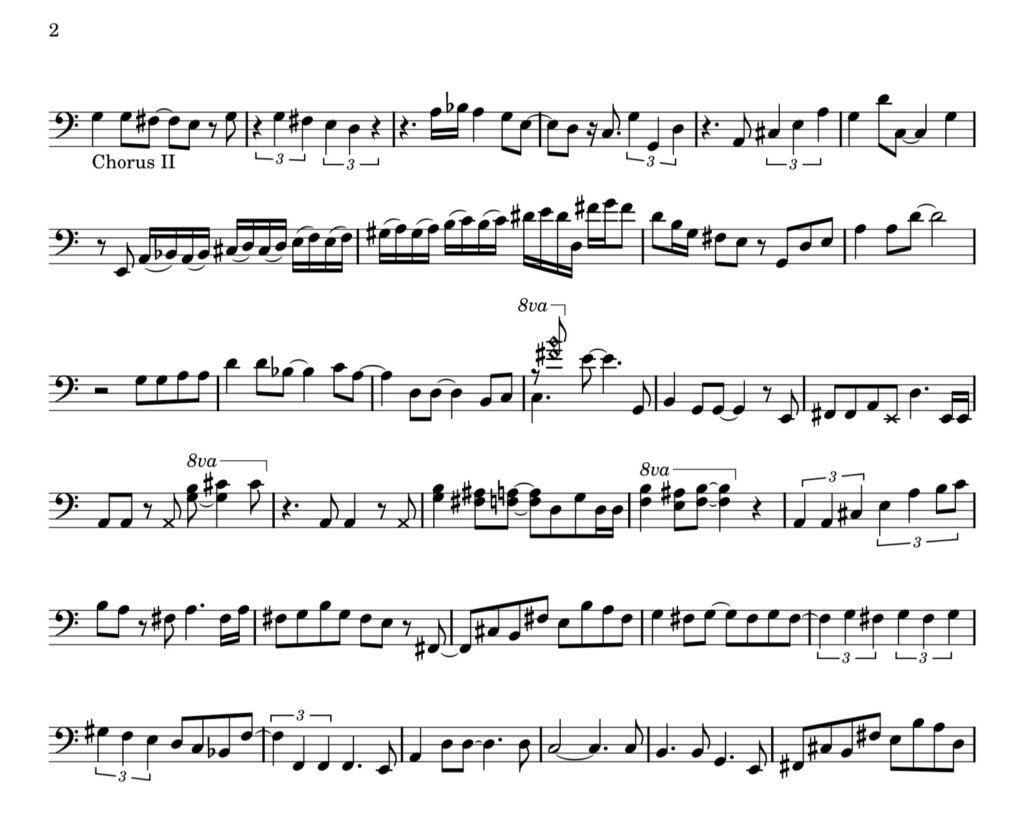Bright Size Life is the debut album by Pat Metheny, recorded in December 1975 and released on ECM. The trio features rhythm section Jaco Pastorius and Bob Moses.
Objective:
- To prepare to play the iconic bass parts in Bright Size Life by Jaco Pastorius.
- To examine the techniques and concepts behind Jaco’s bass line and solo.
Lesson Plan:
- Immerse in the Music:
- Start by listening to the recording several times and focus on the structure.
- Follow along with transcriptions any section or parts you are trying to learn. This will help build a foundation for learning the piece.
- Melodic Mastery:
- Learn the melodic structure of the song on bass. Though the melody is primarily played on guitar, the bass line complements it in intricate ways.
- Begin by playing the melody at a slower tempo to get comfortable. Once confident, practice it with a backing track.
- Bass Line Brilliance:
- Jaco’s bass line in Bright Size Life is a perfect example of his melodic approach to bass playing.
- Pay close attention to the use of phrases and the rhythmic nuances that define the groove.
- Solo Exploration:
- Dissect Jaco’s solo passages in the song. While brief, these segments show his ability to weave in melodic ideas using minimal space.
- Analyze the harmonic structure of the solo and how it complements Metheny’s chord progression. Practice the solo using a backing track to help internalize the changes.
- Your Moment:
- Bring it all together by playing the entire song, focusing on Jaco’s stylistic choices. Perform the song with a backing track.
Practice Assignment:
- Melody Practice:
- Practice the melody slowly, ensuring is spot on. Once you’re comfortable, increase the tempo and play along with the recording or a backing track.
- Bass Line Refinement:
- Break the bass line into sections and practice each at a slower tempo before putting them together.
- Solo Mastery:
- Divide Jaco’s solo into smaller sections and master each part individually. Then, combine them into the full solo. Once confident, try playing the solo with the full band arrangement or a backing track.
- Full Performance:
- Perform the entire piece, from the intro to the outro, focusing on integrating all elements of the bass line. Record yourself and analyze areas where you can improve timing or feel.
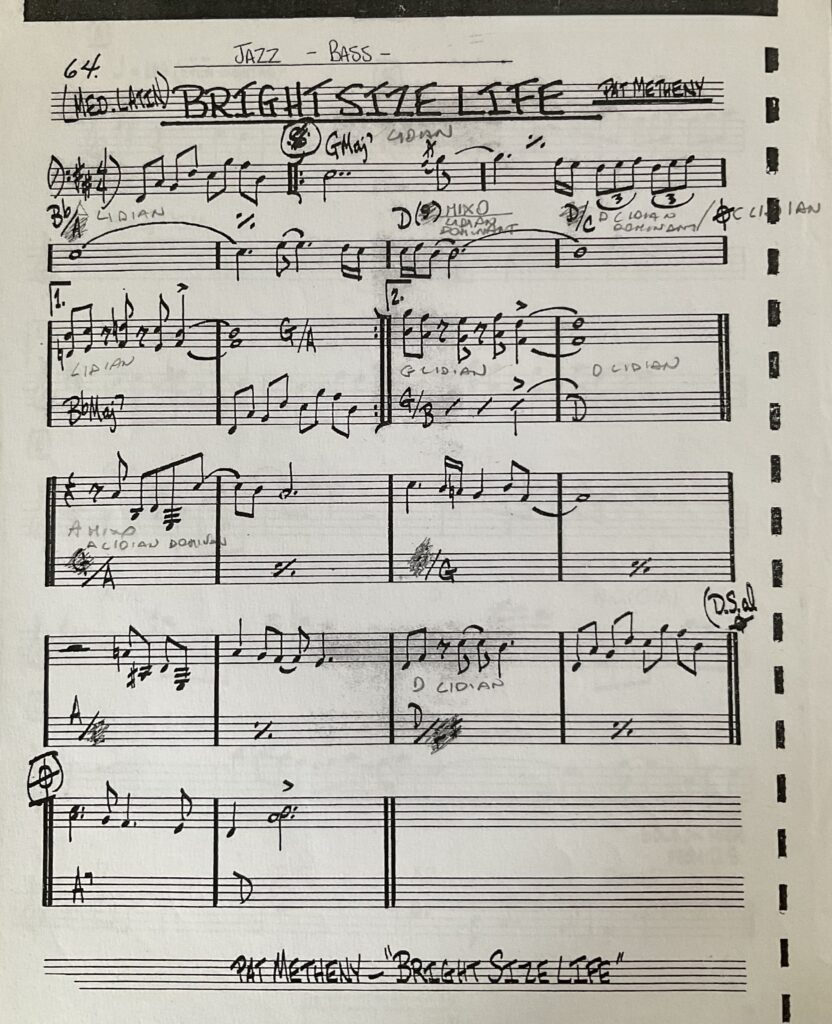
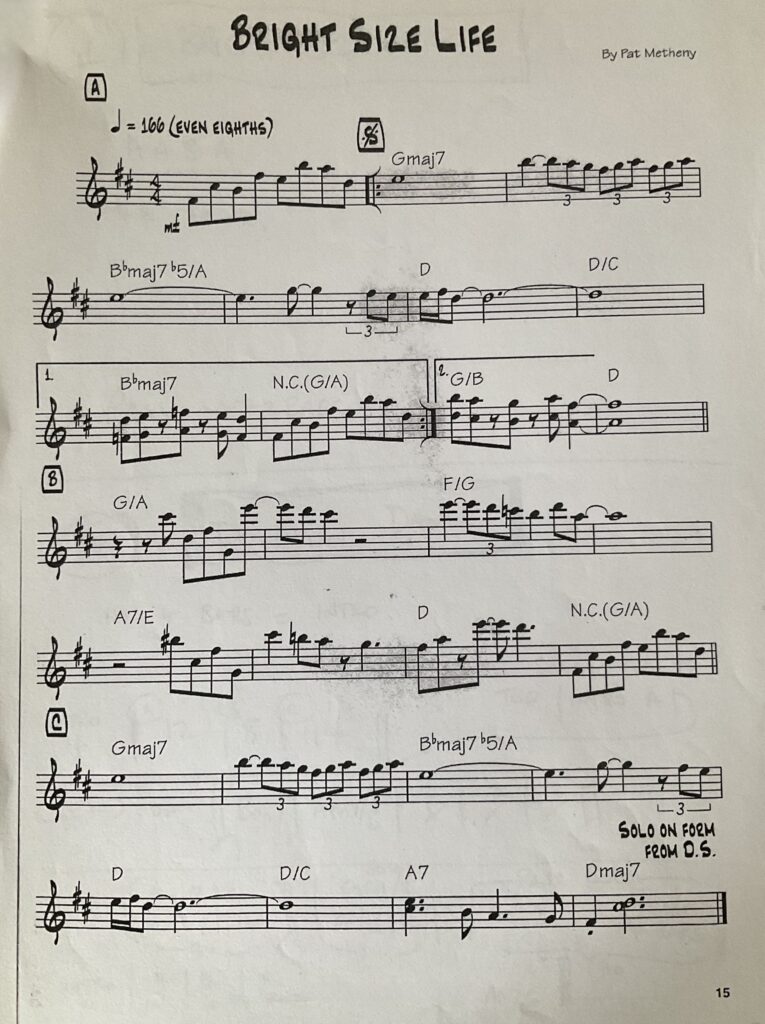
Jaco’s Bass Line
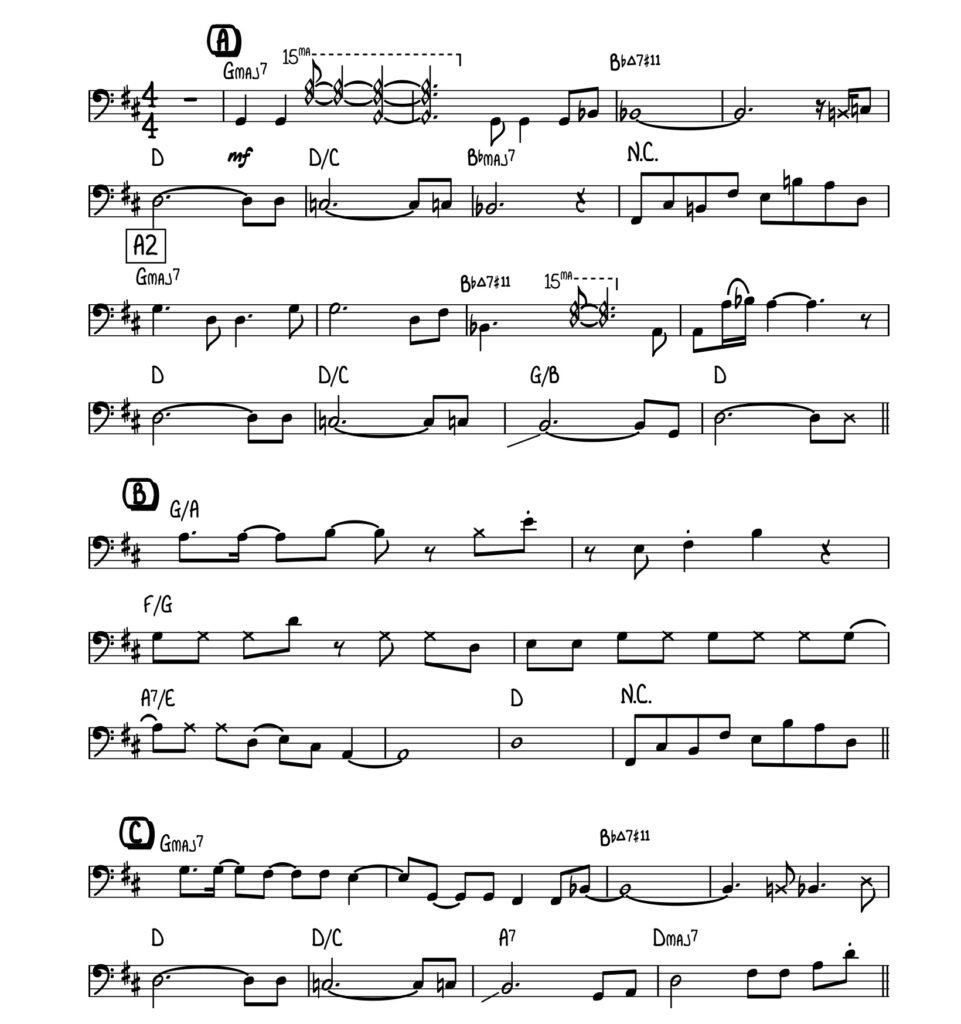
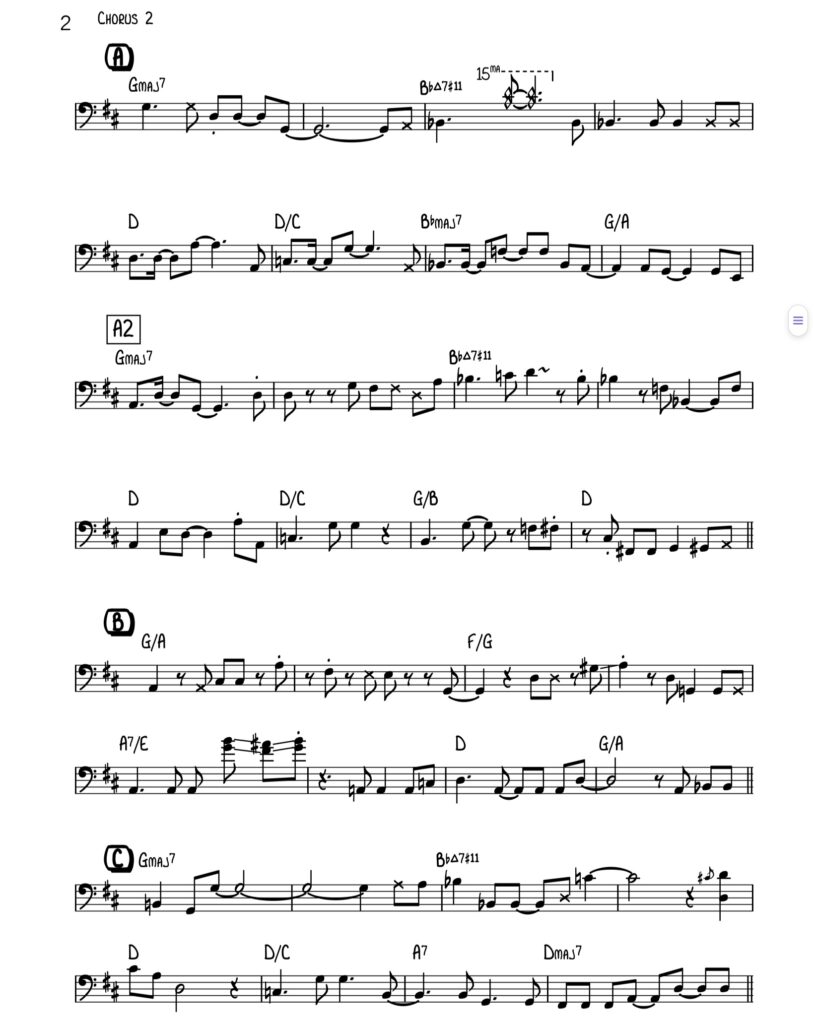
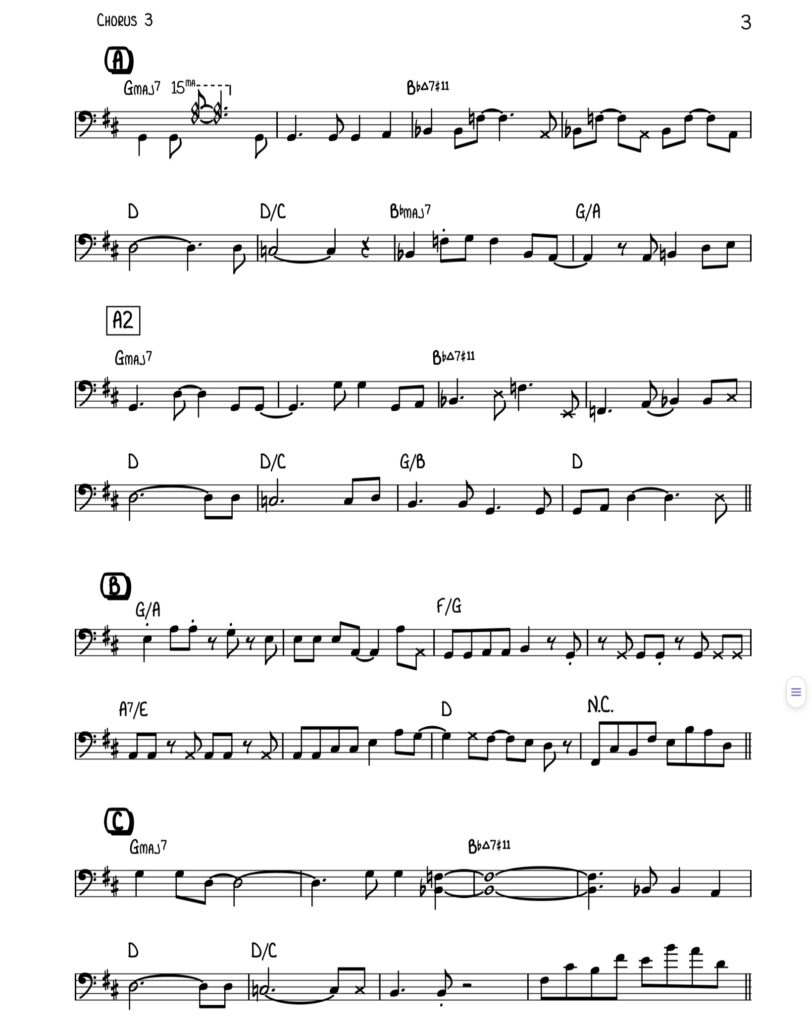

Jaco Pastorius’ solo on this track is an excellent example of his use of thematic development and legato phrasing. He opens the solo with a fragment from the melody, consisting of a series of fifths, this melodic theme is paired with a quarter note triplet motif that becomes a recurring element throughout the solo.
In the early measures, Jaco stays closely connected to the chord tones, keeping the phrasing more restrained. Rhythmically, he shifts from the triplet pattern to eighth notes and longer quarter note phrases. Jaco remains anchored within the harmony, with subtle articulations of chord tones that maintain clarity in the harmonic progression.
A hallmark of master improvisers like Jaco is their ability to create and release tension through a gradual build-up in intensity. Jaco’s solo in “Bright Size Life” demonstrates this mastery as he subtly expands the harmonic and rhythmic framework of the piece, without losing the listener’s sense of form, melody or harmonic integrity.
Jaco’s Solo
